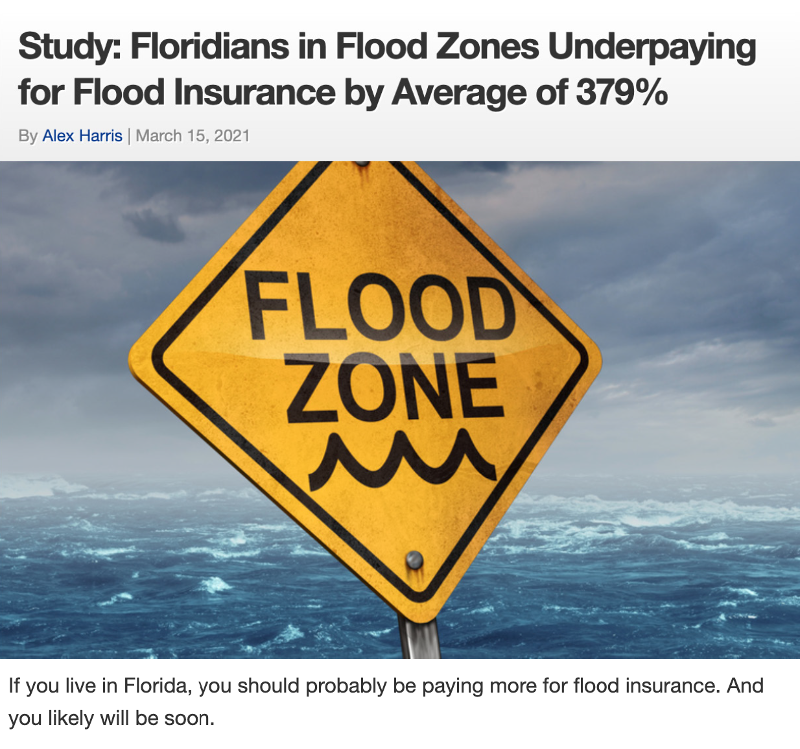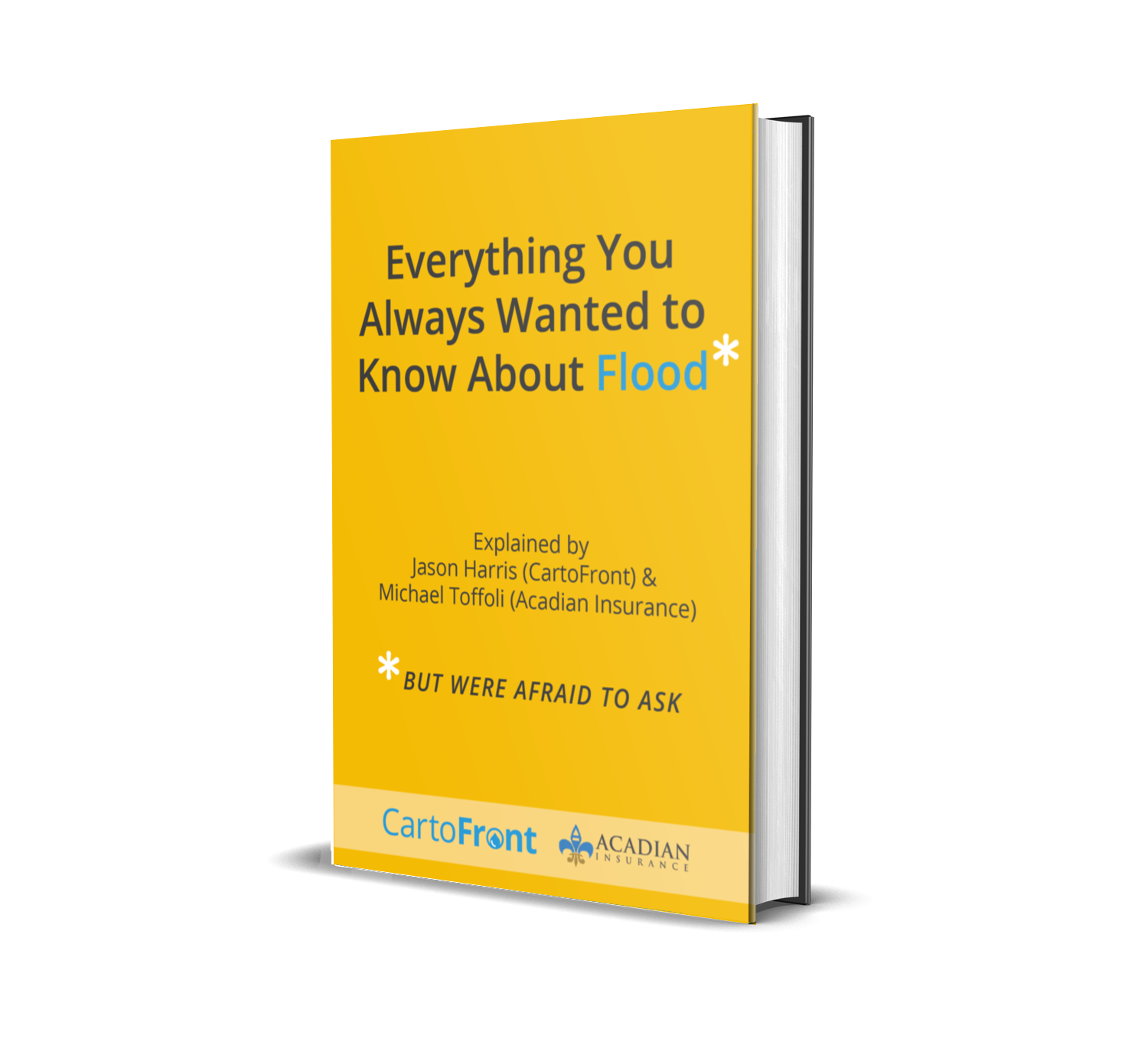You are viewing our site as an Agent, Switch Your View:
Agent | Broker Reset Filters to Default Back to ListWhat's This I Hear About the Government Raising the Rates of Flood Insurance?
March 25 2021
You may have seen two news stories in the last month regarding flood insurance:
- The first turned many heads -- it was a study of Floridians in flood zones underpaying for flood insurance by as much as 379%.
- The second centered on objections to FEMA's modernization program, Risk Rating 2.0, by Senator Chuck Schumer -- prompting speculation about possible delays to the program's implementation.
Let's take a few minutes to explain what is happening … in plain English.
 From our previous articles, flood insurance is very $#@!&^% confusing, sold separately from homeowners insurance, and has two pricing systems: Public (The National Flood Insurance Program, or NFIP) and an emerging Private Market (offered by for-profit insurance carriers).
From our previous articles, flood insurance is very $#@!&^% confusing, sold separately from homeowners insurance, and has two pricing systems: Public (The National Flood Insurance Program, or NFIP) and an emerging Private Market (offered by for-profit insurance carriers).
Since the beginning, NFIP has based their entire flood insurance program on flood zones. Pricing has been by what "ZONE" a property is designated in, and there is a standard price for that zone. It is a blanket approach, and is considered very "black and white" in its price and administration.
And for the highest risk zones, the government has knowingly subsidized the pricing to make the insurance affordable to all Americans. As of December 2019, NFIP owes $20.25 billion to the US.
For private insurance carriers, they price each property based on proprietary data, weather mapping, historical claims data, and their own price-risk ratio. Private insurers have shown that there is wide discrepancy between stated "flood zones" and their proprietary pricing -- which is what they are willing to underwrite for actual property risk.
Risk Rating 2.0, which has been in development for several years, is FEMA's effort to modernize the National Flood Insurance Program, so that they apply data and technology to appropriately price every property in America -- essentially matching the private insurance carrier approach to price-risk pricing.
So, when an independent research study comes out comparing the historical zone-based pricing versus current pricing with technology and data, you get headlines of possible 379% increases.
Some of this is very accurate, and some of this is sensationalized for newspaper consumption.
Objections to Risk Rating 2.0 by Chuck Schumer, New York senator and Democratic Majority Leader, have prompted speculation about further delays to the rollout of FEMA's modernization program -- the implementation of which has already been pushed back a year to October 1, 2021 from its original date of October 1, 2020. It is not yet clear if there will be further delays beyond this date.
In any case, the next step will be a full review of FEMA's plans through the checks and balances that is our U.S. Government, where committees will review the accuracy, fairness and rollout of the FEMA/NFIP plan.
And it is an urgently needed step.
"Risk Rating 2.0 is long overdue," Carolyn Kousky, Director of the Wharton Risk Center at the University of Pennsylvania, has said. Kousky is correct, yet NFIP, FEMA and the US Congress learned a difficult lesson the last time they tried to enact significant pricing change.
In 2012, Congress enacted the Biggert-Waters Flood Insurance Reform act to change NFIP insurance rates to match actual pricing for actual risk -- only to then pass the Homeowner Flood Insurance Affordability Act two years later in 2014 to grandfather in much of the increased insurance rates. (source)
So that history does not repeat itself, FEMA and Congress must re-imagine the National Flood Insurance Program so that it is sustainable for the future.
In the last decade, climate change has advanced and is impacting livability across the U.S., as well as causing economic distress on our public and private sectors.
Now is the time to make a long range plan that integrates climate and socioeconomic factors to account for our future flood needs.
 If you are interested in learning more, access our free eBook: Everything You Always Wanted To Know About Flood Insurance* (*But Were Afraid To Ask)
If you are interested in learning more, access our free eBook: Everything You Always Wanted To Know About Flood Insurance* (*But Were Afraid To Ask)
CartoFront is a technology services company that is simplifying flood insurance for REALTORS®, their clients, and insurance agents.
**Image credit: Insurance Journal, March 15









